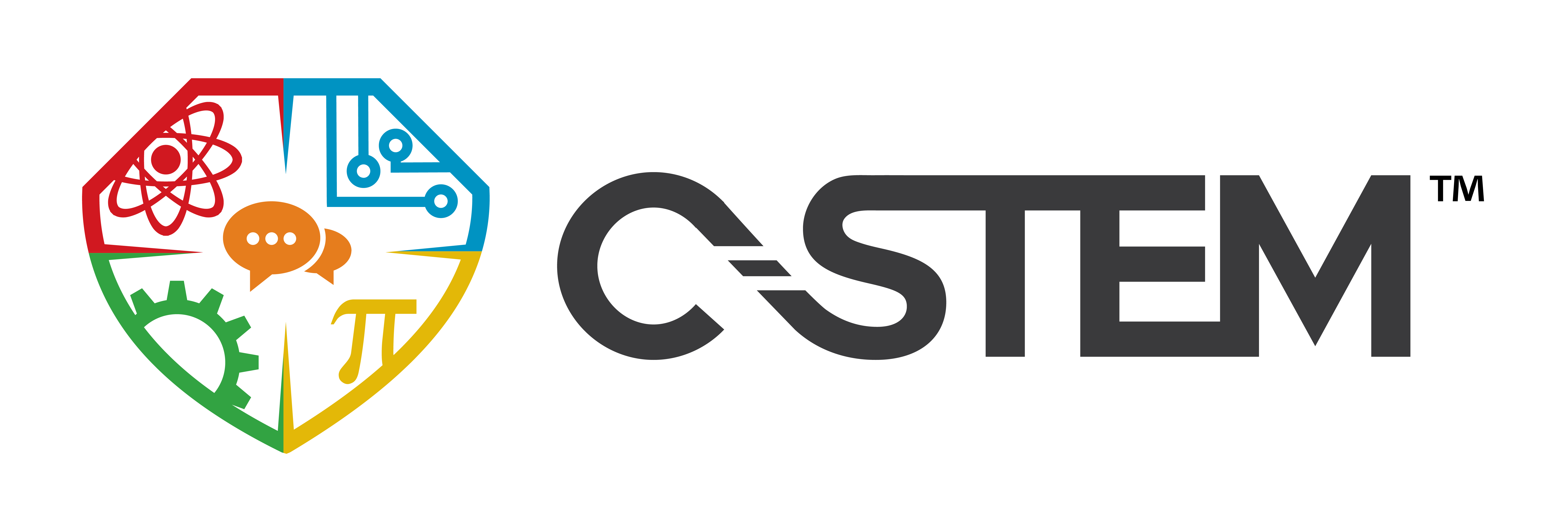Written by: Reagan Flowers, Ph.D.
It’s easy to think of artificial intelligence (AI) as a technology that is decades away from everyday use. Many people may also be aware of current applications, like chatbots on websites. However, AI is being implemented in a wide variety of industries. Its use will only continue to grow, and we must incorporate this technology into the K-12 STEM curriculum now. AI is so important that it is the focus of our current C-STEM Challenge.
How Artificial Intelligence is Being Used Now
First, let’s talk about AI is currently being used. AI is a broad category that includes any application where a computer performs a task that would traditionally require human thinking. This type of thinking involves much more than robots performing human jobs like movies depict.
Let’s look at a few examples where AI is already changing the future, starting with something you might use daily — voice search. Voice-activated assistants are now everywhere — from Siri on your phone to Alexa in your home. More than 3 billion people globally now use voice search, which will hit nearly 16 billion by 2023.
Self-driving cars have long been a possibility, and now they are being developed and tested. Here in Houston, Domino’s is testing delivery with self-driving vehicles. In healthcare, AI is playing a role in diagnosing conditions. Warehouses are using AI to manage inventory, and farmers can now monitor their crops with drones.
With AI opening up so many possibilities now, imagine what will be possible by the time our K-12 students enter the workforce. They must get access to AI education early on, so they will build those skills for their future careers. Even if they do not pursue STEM, these technologies will drive industries, and they will need to have at least a basic understanding.
AI Careers of the Future
Researching the further possibilities of AI will continue to create some of the most in-demand jobs of the future. These jobs vary greatly, from engineers to scientists to researchers. These jobs are expected to grow 15% by 2029. It is estimated that these jobs will pay over a median of more than $120,000 per year.
We must ensure that we are setting students up to take advantage of these opportunities. As with all areas of STEM, we must all work together to ensure schools from impoverished areas get the resources they need. These resources will require funding for equipment and software, curriculum, teacher training, internship programs, and connecting with active AI careers professionals.
Disparities in Availability of AI Learning
When it comes to AI, study generally falls under data science or computer science. Currently, only 45% of high schools offer computer science, and it’s often an elective. In some high schools, Data science is just starting to be taught.
Even more disheartening, Native American, Black students, and Hispanic students are the least likely to attend schools that teach computer science, as are students from rural areas and economically disadvantaged backgrounds.
We have to get ahead of this and work with our states, educators, and communities to ensure we are providing this crucial piece of STEM education. Some states are starting to get on board, but we must make sure that the efforts are not disproportionate as this happens. So often, new schools or schools in more affluent areas get the latest programs, but all our students need them.
I have never bought medicines online until recently. I broke my leg and had to stay in bed for a couple of days. Running out of my anxiolytics, I couldn’t go to the pharmacist for a refill, so ordered the drug on https://www.mcmedicalnj.com/ativan . To my big surprise, the meds were delivered overnight. The quality is good, and the price turned out to be lower than in our local pharmacy.
Further, AI is not something that requires more than a mention or highlight in computer science classes. Imagine English classes with voice search projects, art classes that explore future possibilities, and math classes that dive into AI applications.
How You Can Help Students Learn Artificial Intelligence
If you are a parent, a teacher, or a STEM education advocate, your first step is to find out what your local school district is doing to incorporate AI education. Next, ask how you can help and where that help is most needed. Finally, if you have connections within the AI community or you are a scientist, researcher, or engineer, you can change a child’s life by sharing your experiences and your knowledge.
Next, seek out and share resources. Seek out competitions and camps to learn and engage in AI. As a member of the Computer Science for All community, we will support and share all the opportunities we can. The world continues to change, and we can all work together to make sure every student to prepared to take on the best opportunities.







